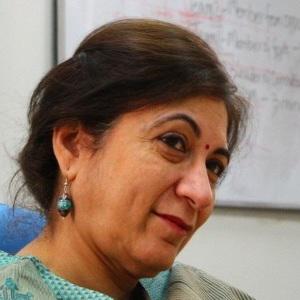Choice and cost: The role of household decision making and spending on secondary education in rural Bihar
For a variety of reasons, Bihar is one of the most interesting states in India to understand educational choices. Given the national push for universalising secondary education across the country, a detailed understanding of the context in which this is likely to happen can provide important insights for future policy and practice. There are some key features of the educational landscape in Bihar: first, there are currently about 3000 government high schools in Bihar[1]. There are plans to a start a high school in every panchayat within the next year or so. In recent years, the Bihar government has introduced several innovative schemes to encourage students, especially girls, to access high school.[2] The cycle scheme is a well-known example. Interestingly, despite the acute shortage of high schools, the number of students taking the Std. 10 exams has been going up each year. Second, the incidence of private schools is among the lowest in India. Although the numbers are low, there are indications that the number is rising over time.
Another important feature of the educational landscape in Bihar is the prevalence of supplemental provision in education in the form of coaching and tuition. This is not just an urban phenomenon. Evidence from ASER indicates that the incidence of tuition and coaching in rural Bihar is among the highest in the country. For instance, in 2012, almost 50% of all children in rural government schools (Std. 1-8) availed of private tuition. In Std. 8, this number is much higher with 65% of all rural government school children paying for supplemental help. Further, these numbers have been increasing over time. Yet very little is known about this vast, unorganised and unregulated sector. This is particularly true about the provision and quality of coaching, the way it is organised and its cost.
This IGC-funded research study is a pilot study for understanding the interrelated aspects of access to and participation of children transitioning from upper primary to secondary schools in Bihar. The study will have two major components: the first part will analyse the policy landscape of secondary education at the national and the state level, document various schemes launched to encourage secondary education, and analyse budgetary provisions and expenditure patterns.
The second part of the study will be primary data collection. This section of the project will have three parts. First, from the point of view of provision – we will map all educational institutions offering upper primary and secondary education in a block (we are specifically interested in understanding the challenges faced by children in transitioning from Std 8 to Std 9 and 10 in a particular geographical area). The second part of the field study will be a census of all villages in two panchayats (of the same block where the mapping exercise will be done) which will focus on understanding household decision-making dynamics with regard to who goes to what kind of secondary school, what kind of supplementary learning support our target children get and the expenditure on education. Subsequent to the household level survey, we will collect in-depth information about the schools and tuition centres that the target group attends. This information will supplement the GPS data collected in the first round of field work.
Therefore, the study will yield a snapshot of the secondary education sector in rural Bihar: What are the gaps in provisioning? What limits access, particularly of girls to secondary education? Is it just access, or do households actively choose pathways (school & tuition) that vary by gender and social background? If so, what are the factors that influence this choice? What are the dynamics of transition from middle to secondary school? Why do some children transition and others do not? The data, we thus expect will reveal the different aspects of decision making that households need to make when deciding on secondary education. It is this which would enable the government to take appropriate steps in the matter.
As stated above, the demographic dividend is yet to accrue in the North. Whether Bihar will be able to harness this dividend and translate it into sustained growth, will crucially depend on the quality of its labour force. To enhance skill generation it will be essential to improve transition rates from middle to secondary school, the stage at which many children drop out and join the labour force. The proposed study will provide key insights into this decision, which can provide useful inputs for education policy in Bihar.
[1] http://indiaedunews.net/Bihar/Bihar_to_upgrade_2,400_middle_schools_to_high_schools_10466/
[2] One such scheme is the “MukhyaMantriBalika Cycle Yojana”. This provides bicycles to all girls who have passed Std. 8 and are enrolled Std. 9. Recently the scheme has been extended to boys as well.




